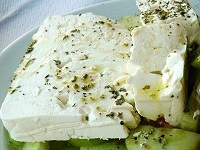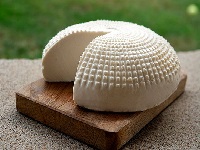Espumante (Portugal)
In Portugal, sparkling wine is called Espumante.
They can be made using the Taditional, Charmat, or Transfer method.
Espumante Flavors
Typical Espumante flavors are Citrus, Apple, Pear, Pineapple, White Flowers. Herbs and Almonds.
Lemon |
Lime |
Apple |
Pear |
Pineapple |
Flowers |
Herbs |
Almonds |
Espumante Profile
Espumante wines are dry and acidic, much like Prosecco:
| SUGAR: | Dry 5g/l |
| BODY: | Light |
| FRUIT: | Low |
| ACIDITY: | High |
| ALCOHOL: | 10-12% |
| Serving temperatures: 6-8°C (43-46°F) | |
Espumante Food Pairing
You can drink sparkling wine to almost everything, whether it is French Champagne, Spanish Cava or Italian Prosecco.
Sparkling wines pair very well with salty food, because the bubbles break up the salt in the mouth. The acidity and bubbles also pair well with rich food, creamy and oily dishes.
Aperitif |
Salads |
Tapas |
Sandwitch |
Seafood |
Fries |
Egg Dishes |
Pasta |
Strawberries |
Cantucci |
Panettone |
Soft Cheese |
Excellent Pairings
Antipasti. Sandwiches. Focaccia.
Green Salad. Asparagus. Avocado. Artichokes.
Ham and Melon. Prosciutto. Serano.
Egg Dishes. Omelette. Smoked Salmon.
French Fries. Popcorn.
Panettone. Biscuits.
Fruit Salad. Sweet Soufflés.
Figs. Chocolate. Crème Brulée.
The Ideal Glass for Espumante

|
A Flute Glass has a tall and narrow bowl to emphasize the aromas of the wine. The shape also helps balance the acidity found in sparkling wines. Flutes also preserve bubbles by reducing the surface area at the top, which slows the release of carbonation, keeping a sparkling wine fizzy for longer. |
Espumante Cheese Pairing
Brie and Camembert
The creamy, buttery texture and mild flavors of Brie or Camembert pair well with Espumante's soft bubbles and fruity notes. Serve the cheese at room temperature with slices of pear or apple.
Chèvre (Goat Cheese)
The tangy, fresh flavors of goat cheese complement the acidity often found in Espumante, especially those made from Chenin Blanc or Sauvignon Blanc. Drizzle with a bit of honey or sprinkle with fresh herbs.
Chaource
This creamy, slightly tangy cheese enhances Espumante's gentle acidity and complements its soft bubbles. Serve with fresh berries or a touch of apricot jam.
Langres
This mild, washed-rind cheese has a creamy texture and a subtle tang that pairs beautifully with Espumante. Add a small drop of honey or serve with fresh grapes.Tomme de Savoie
This semi-hard, nutty cheese pairs beautifully with the gentle effervescence and often fruity character of Espumante. Add some dried fruits or nuts to highlight the pairing.
Portuguese Sparkling
In Portugal, Sparkling wine is called Espumante. It has 3 quality levels:
VEQPRD
(Vinho Espumante de Qualidade Produzido em Região Determinada).
Método Tradicional wines, marked with the year of harvest, and stamped as VEQPRD. These wines are only produced in Bairrada DOC, south of Vinho Verde.
VFQPRD
(Vinho Frisante de Qualidade Produzido em Região Determinada).
Regional sparkling wines made with the Traditional, Charmat, or Transfer Method, in Douro, Ribatejo, Minho, Alentejo or Estremadura.
VQPRD
(Vinho de Qualidade Produzido em Região Determinada).
Sparkling wines made by the Traditional, Charmat, or Transfer method, anywhere in Portugal.
Espumoso
Espomoso is a low level sparkling wine, made by adding Carbon Dioxide - CO2.





